In 1984 I was sitting in a University of Maryland classroom listening to my Economics professor chunter on about capital markets, foreign investment, and the importance of infrastructure in developing countries. I remember thinking, "When the hell am I ever going to make use of this information?"
Fifteen years later, it happened…
The Skytrain Effect
As I stepped aboard Bangkok’s brand new "Skytrain" mass transit system in December 1999, I was awash in a wave of nostalgia. Growing up in Orlando, I remembered going to Disney World with my family when it opened in 1971. We’d parked at the space-age Contemporary Hotel to ride the futuristic monorail into the Magic Kingdom theme park. It was cool and sleek, and I felt like I was in an episode of Star Trek!
Now nearly 30 years later, and there I was… riding a train in the sky over a sparkling city with modern skyscrapers and ancient temples seamlessly blended in urban harmony. Once again, I felt like I had been magically transported to the future.
My old professor’s words crept back into my thoughts, "Smart investors surf in front of the infrastructure," Dr. Cephelas insisted. "Higher standards of living and escalating property values always follow new bridges, roads, and airports." This "train in the sky" thing looked like an infrastructure wave I could surf, so I dove in.
Your chance to retire overseas now
Your chance to retire overseas now
Learn more about Thailand and other destinations by signing up to our daily IL Postcards e-letter and we'll immediately send you a free report: 20 Countries Compared, Contrasted, Ranked, and Rated.
You don’t have to be rich to enjoy a pampered retirement, you just need to know where to go.
With our 34th Annual Global Retirement Index, our experts hand you a detailed roadmap. Details and a Special Offer Here!

By submitting your email address, you will receive a free subscription to IL Postcards, Overseas Dream Home, The Untourist Daily and special offers from International Living and our affiliates. You can unsubscribe at any time, and we encourage you to read more about our Privacy Policy.
Six months earlier, I’d taken my first trip to Thailand, and Bangkok had me firmly under its spell. I’d just finished renovating and flipping two big condos back home in Florida and realized I had a knack for it. Leaving behind a soul-sucking job in the publishing business, I decided to indulge my passion for property in the most exotic and dynamic place I’d ever imagined.
I purchased three one-bedroom condos in the Japanese quarter of Bangkok that needed some TLC. The building was a 15-year-old high rise on Sukhumvit Soi 16, walking distance from the city’s epicenter and the interchange station where the new Skytrain and Subway crossed paths. I could leave my place, walk for ten minutes and then choose to go over or under all that steaming traffic.
Over the next several years I watched the Skytrain and its sister, the Metropolitan Rapid Transit (MRT) Subway, change the way ten million people in the sprawling metropolis of Bangkok lived. Workers and students could easily commute from anywhere in the city. Houses for sale and apartments for rent were advertised by the nearest station.
I enjoyed a 9% net annual return on my investments. The Skytrain didn’t just transport people around the city, it delivered rent-paying tenants to my front door.
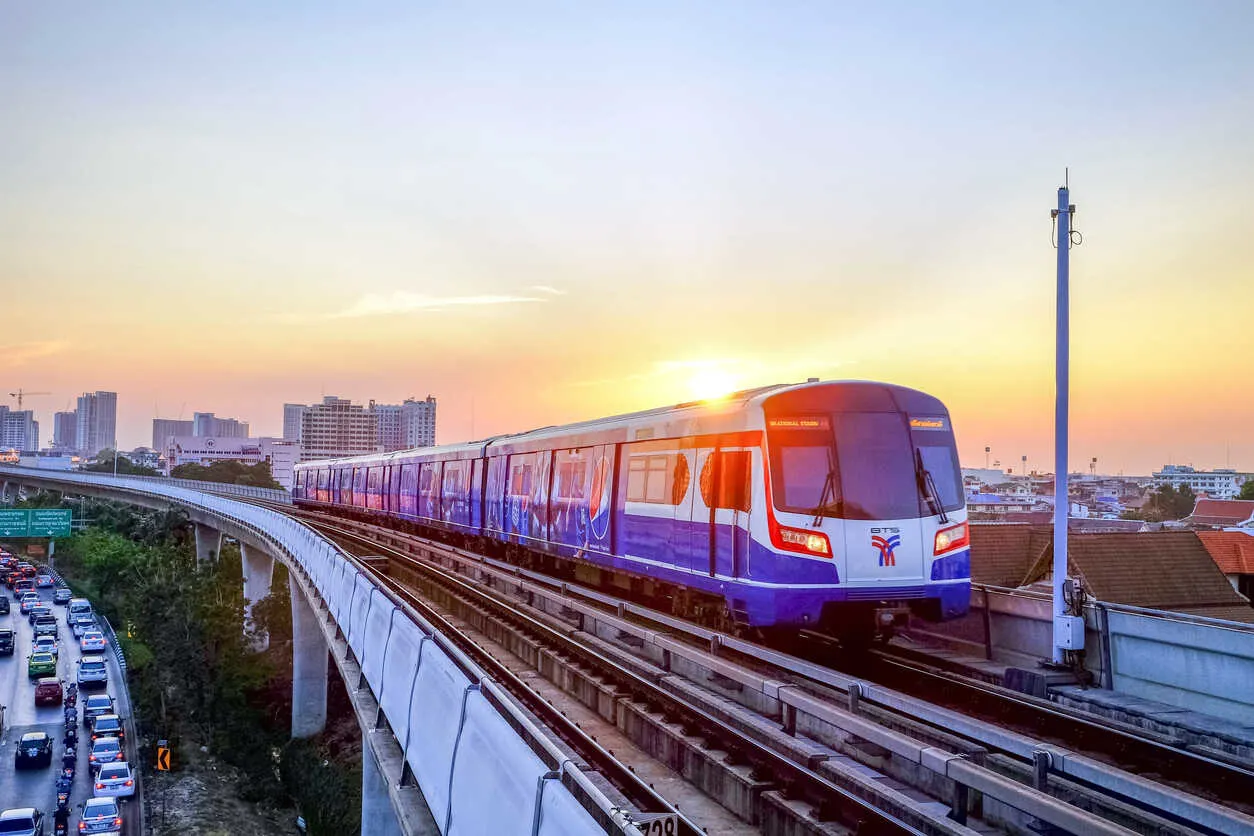
Continuous expansion of the Skytrain and Subway lines has dramatically increased the range of neighborhoods expats can choose to live in Bangkok. Neighborhoods with a more suburban vibe are now only a few stations away from the buzzing city center. It doesn’t matter if you choose a swanky studio in Silom, a trendy townhouse in Thonglor, or a big-ass bungalow in Bangna, you can get there from anywhere in the city. It’s no wonder Bangkok was voted the "Best City in Asia-Pacific" by Travel & Leisure this year.
I felt lucky to have arrived just in time to enjoy the economic surge in Bangkok. It was clear to see that leadership in Thailand was committed to enhancing the country’s standard of living and investment viability with a serious infrastructure development program.
Because Thailand is as far away from North America as a person can get without getting on a spaceship, many Americans have misguided perceptions about it. It’s far from being a third world country. Diversity is what makes the country special.
Sparkling cosmopolitan cities, spectacular seaside resorts, misty mountain retreats… skyscrapers and ancient temples all coming together as delicately as a piquant Thai curry. American expats move here to live twice as good for half as much.
During my early years in Bangkok, I learned it doesn’t matter if you’re a retiree looking for a sleepy beach town, a savvy investor who wants to ride the next wave of development, or somewhere in between… Understanding what kind of infrastructure is, or is not, coming in this part of the world could make a big difference when deciding on a location to settle. It was like attending another economics lecture titled, "The Skytrain Effect."
In 2009, I cashed out of Bangkok because I could see the next wave on the horizon. When I heard about the EEC development initiative, I started waxing up my surfboard. The "Eastern Economic Corridor" (EEC) is the most extensive and ambitious infrastructure project currently underway in Thailand. New roads, new runways, deep sea port expansions, and high-speed trains all moving people and goods up and down the Eastern Seaboard, from Bangkok to Rayong.
Bangkok Beach
The mass transit systems in the capital city are just one phase of this much larger initiative that will connect and supercharge the Eastern Seaboard, which runs from the capital city of Bangkok down the coast 190 kilometers to the coastal city of Rayong. This is inarguably the economic backbone of Thailand, and one of the most dynamic regions in Southeast Asia.
It started in 2006 with the completion of Suvarnabhumi International Airport on the southeast side of Bangkok. This state-of-the-art facility has never stopped expanding and can now handle up to 65 million passengers a year. But the old international airport at Don Muang remains open and is expanding again with a capacity of 30 million passengers.
With two operating air hubs functioning in the capital city, it was the highway system’s turn to upgrade. If you were to ask someone in Bangkok 20 years ago, "How long does it take to get to Pattaya Beach?" the average answer would be "five hours." The golden sand, verdant fairways, and legendary nightlife of Chonburi Province seemed so close yet so far away. The road to the beach was infested with traffic lights and traffic jams.
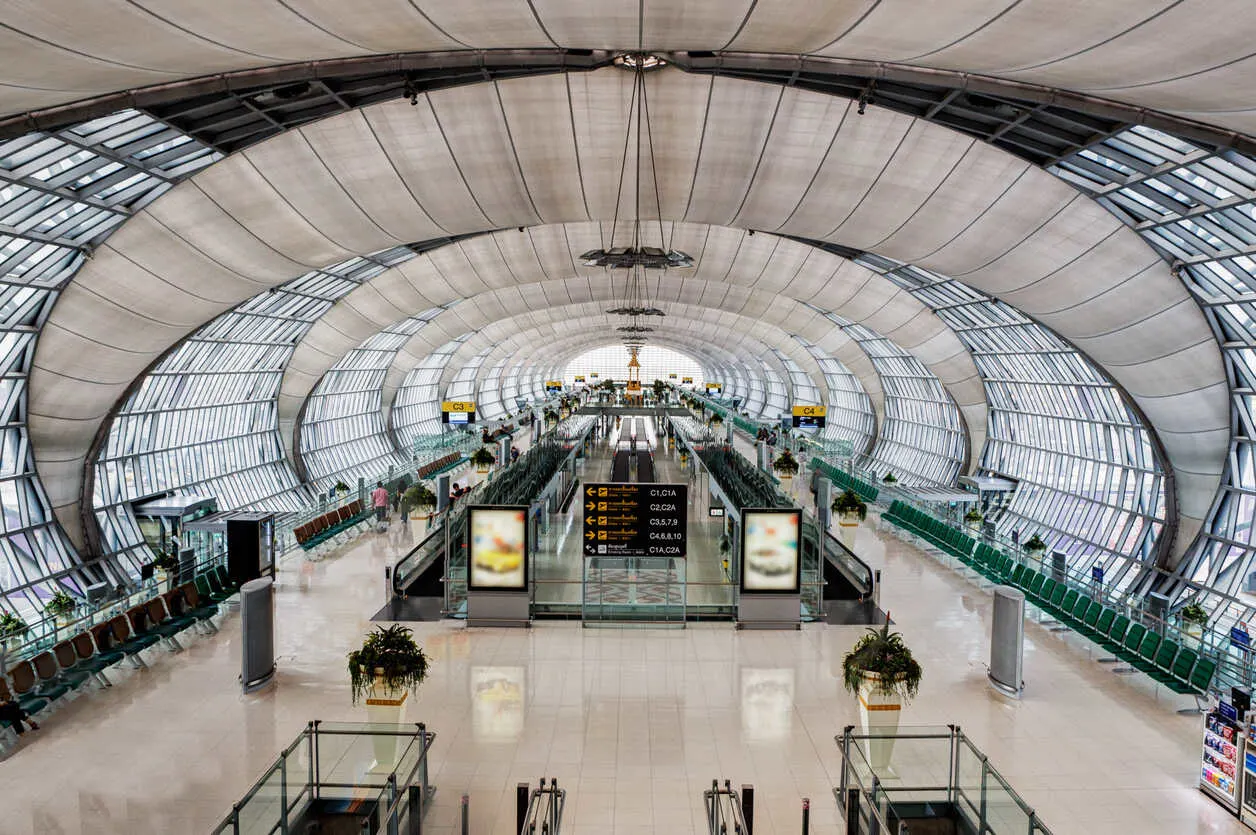
In 2010, a section of the Bangkok-Ban Chang Motorway (aka Motorway 7) opened to connect Bangkok to Pattaya City, a vibrant seaside resort town on the Gulf of Thailand. It shortened that trip to just two hours. It felt like Bangkok threw a rope around the beach and pulled it three hours closer.
Since then, the Eastern Seaboard has exploded with development. We’ve gone through three distinct building booms with skyscraper beachfront condos, luxurious shopping malls, and massive expansion of suburban East Pattaya and Hua Yai.
With its new designation as "Bangkok Beach," the seaside resort of Pattaya began to shed its sleazy image earned when it was a favorite playground for American military troops during the Vietnam War. Nowadays, on long holiday weekends, there’s always a steady stream of cars heading south from the capital, full of city dwellers eager to dig their toes in the sand and sip something out of a coconut. It took 50 years, but Pattaya is "cool" again.
I live in Jomtien Beach near Pattaya. Those of us who arrived before the boom have a great appreciation for that 150-kilometer road. Not only do we enjoy easier access to Bangkok, but our property values have increased handsomely, and finding renters for investment properties is easy. My three condos stayed occupied even through the pandemic.
Opportunity Zone
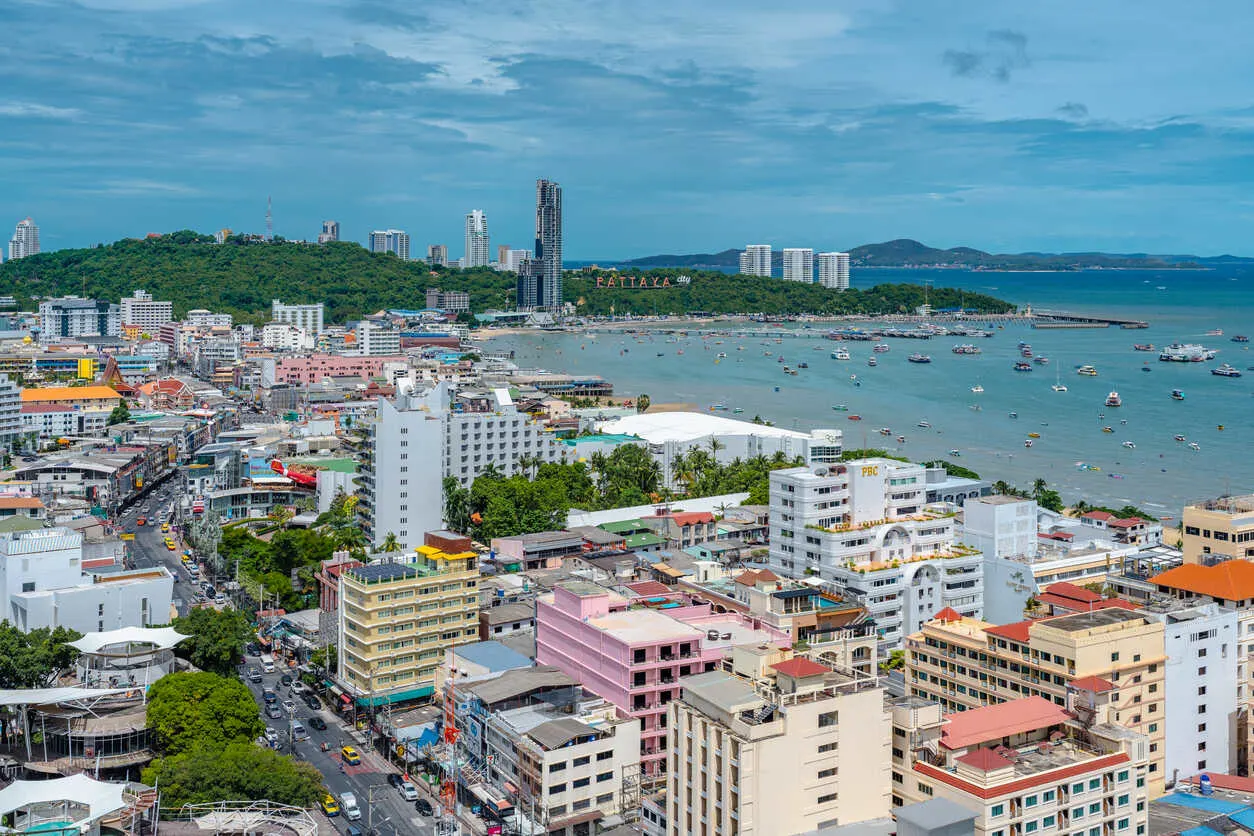
Just like the people-moving trains and airports in Bangkok, the motorway expansion has never stopped. Earlier this year, a new spur of Motorway 7 opened that allows motorists traveling from the capital to drive directly to the southern end of the eastern seaboard at the city of Rayong.
This new road has created an "opportunity zone" along the 70 kilometers of coast between Pattaya and Rayong. Sleepy fishing villages and funky beach towns like Ban Amphur and Bang Sare dot the coastline and some are perfect for expat living and investing.
Ban Amphur
I lived in the village of Ban Amphur, directly on the beach, for five years. There are several reasons to love it. It’s not very big and the main attraction is the legendary "Ban Amphur Seafood District." A dozen or so open-air Thai style seafood restaurants are lined up on the north end of the beach where the fishing boats come in. On holiday weekends, Bangkokians flock there to consume copious amounts of crab and squid. The last time I attended a family feast at Preecha Seafood Restaurant in Ban Ampur our party of four plowed through an embarrassing amount of blue crab, tiger prawns, grilled squid, and steamed seabass for 1,500 THB ($50).
The beach itself is composed of fine golden sand, takes about 20 minutes to walk from one end to the other, and is lined with a paved footpath shaded by coconut trees. It’s not overrun with vendors or other tourist annoyances. Most of the expats who live there are retirees who like to play golf and chill by the pool. It seems really remote and peaceful, but it’s only 15 minutes to the big city convenience of Pattaya.
Many of the condos and resorts along the beach were built in the early 2000s with huge rooms and have gorgeous mature green areas. There are a lot of properties in Ban Amphur ripe for renovation, flipping, or rental income. A big two-bedroom sea view condo can be had for around $125,000. Rentals in some older buildings can be as low as $300 a month with a pool and sea view.
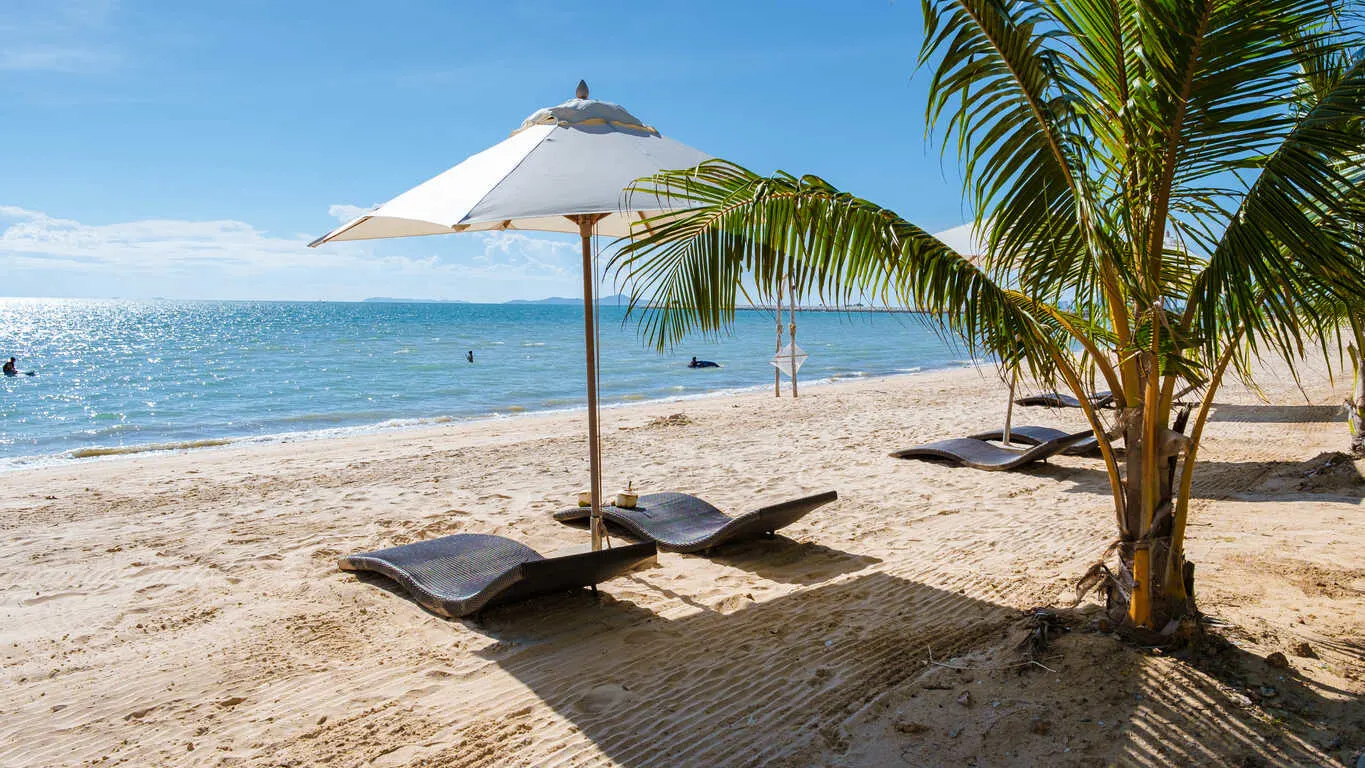
Bang Sare
The next beach south on the coast is the popular fishing village of Bang Sare. The beach is long and narrow with sun bleached sand, a chunky stone seawall, and a massive pier for fishermen jutting out into the bay. As you might imagine, there are some pretty good restaurants in this area too, but my favorite part is the huge Buddhist temple built right on the beach road.
Taking a walk out onto the pier to get the 360 degree view of brightly colored fishing boats on one side and the spectacular temple on the other is what I came to Thailand for.
Many expats who’ve lived in Pattaya and Jomtien Beach for years have migrated south to Bang Sare for more peace and quiet, and some good property deals. There’s an eclectic expat community in Bang Sare that seems to be growing every year. I recently met a friend there at a tiny little jazz club and found a surprising number of Americans sipping cold beers and digging the tunes of a talented trio on a rainy Sunday afternoon.
The streets coming up from the beach are encrusted with all types of cool cafes and eateries. There are no Starbucks or KFCs in this part of the Eastern Seaboard. Strictly mom-n-pop operations. And while there are a few nice pubs and music bars, don’t expect the pulsing nightlife of Pattaya.
A three-bedroom pool villa close to the beach in Bang Sare can be had for about $140,000. Renting a one-bedroom luxury sea view condo will cost between $500 to $700 monthly but prices drop drastically as you move away from the water.
Villages like Ban Amphur and Bang Sare are tethered to the big city of Pattaya as residents will depend on the shopping and livelier entertainment options there. It’s always nice to spend some time in the bigger city as it makes the peace and quiet of the beach communities seem even more serene.
Rayong
I love funky beach towns and secluded little coves for holidays, but I like living at a beach with a city attached to it. That’s why I’m considering a move to the city of Rayong on the southern end of the Eastern Seaboard.
The main industry for years in Rayong has been fishing, but development of the deep sea port at nearby Maptaphut and the presence of the US military at Utapao Air Base during the Vietnam War accelerated Rayong’s infrastructure faster than its surrounding neighbors.
Expats from all over the world who work in Rayong, home to Thailand’s largest industrial park, require quality housing, schools and hospitals for their families. With a population of about 70,000, Rayong isn’t a bustling metropolis, but it isn’t a village either. It’s easy to live there without the need to go shopping in a bigger town. There are plenty of cool places to eat, drink, and be entertained. A day trip to the idyllic island of Koh Samet is only a 90-minute ferry ride.
Retiring expats are discovering the beauty of Rayong’s impressive beaches with their clean white sand and sparkling calm waters. A huge two-bedroom, two-bathroom oceanfront condo will cost about $130,000. A three-bedroom, three-bathroom modern house near the city center will set you back about $160,000. Cozy studio apartments near the beach rent for under $300 per month.
The reason I’m so keen on Rayong is the expansion of Utapao International Airport. The American military left behind what is basically a "city starter kit" with runways long enough for B-52 bombers to take off and land. There are no aircraft too large to land at Utapao and another runway is being added this year.
The expansion of this airport is one of the crown jewels in the EEC initiative. With a free trade zone and air cargo logistics hub on one side and an airport capable of handling 60 million passengers a year on the other, Utapao will be Asia’s first "Aeropolis."
The presence of this facility alone is enough for me as a deal-surfing investor, but there’s another chunk of infrastructure that has me even more excited about the entire corridor…
Fast Trains
The most impressive feature of the EEC development initiative: high-speed trains that will connect three airports and shorten the travel time from Bangkok to Pattaya (30 minutes) and to Rayong (45 minutes).. The line will begin at Bangkok’s original international airport, Don Muang, connect to massive Suvarnabhumi International Airport on the southeast side of town, and then zip down the Eastern Seaboard at over 250 kph ending at Utapao International Airport near Rayong. The trains are scheduled to begin operation in 2026.
Residents of Pattaya can be in the heart of Bangkok in half an hour. Workers and students can commute from anywhere on the coast to Bangkok and vice versa. Tourists can get from the towering temples of Bangkok to the soothing sands of Rayong in 45 minutes. I can leave my place in Jomtien Beach, meet a friend for lunch in Bangkok, and be home in time to watch another epic sunset over the Gulf of Thailand.
The last time an infrastructure project shortened the trip from Bangkok to the coast, the results were an explosion of development and rapidly rising property values. The lion’s share of development this time is likely to happen farther south on the corridor around the "Opportunity Zones" I’ve mentioned, but all the coastal communities will benefit.
In my opinion, the Eastern Seaboard of Thailand offers the widest range of choices for expat living as well as the most upside for investment.
Rampant Overdevelopment
Unfortunately, new infrastructure doesn’t always improve the places it connects. In the early 2000s, I lived on the southern tip of Phuket, Thailand’s largest island just off the southwest coast in the Andaman Sea. The beach at the picturesque village of Nai Harn is the stuff of postcards and adventure movies. Squeaky clean sand, salty sea breezes, and the steady rhythm of waves lapping against the shore.
To get to this remote part of the island you’d go over a treacherous mountain road known for falling rock, perilous curves, and the occasional monkey crossing. It took over an hour to arrive from the Phuket airport.
Several years ago, after I’d left, a new by-pass road snaking down the east coast made getting to the southern tip of the island a breeze. The floodgates opened … and rampant overdevelopment ensued. There were too many people, too many condos, and too many cars for the rickety existing infrastructure. The whole end of the island would be a construction zone for the next ten years trying to catch up. That’s a wave I’m glad I avoided.
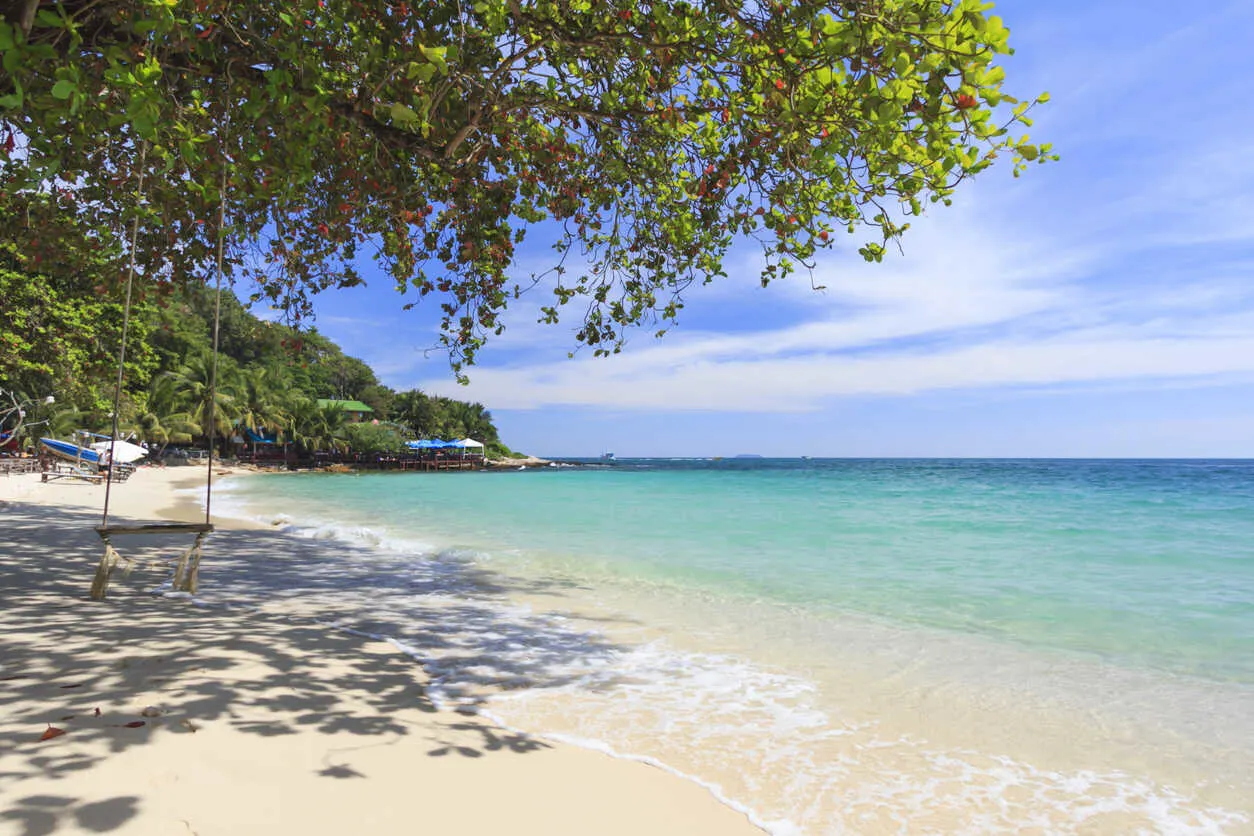
Infrastructure Contrarians
On the other side of the development coin are places that probably won’t expand robustly due to an unwillingness to upgrade their infrastructure. When I meet aspiring "infrastructure contrarians" looking for a place that’s great the way it is and is likely to stay that way, I direct them to the western seaboard on the Gulf of Thailand, including the popular resort town of Hua Hin.
Hua Hin is a spectacular beach community a little over three hours from Bangkok. It’s long been the favorite retreat of the Thai Royal Family and well-heeled residents of the capital. It has golf courses galore and pony rides on the beach—the opposite vibe of what you’ll find in Pattaya.
For years we’ve been hearing about the "Thai Riviera Project" that’s supposed to enhance the tourism viability of all four western seaboard provinces. The project allegedly includes upgrading existing rail links and face-lifting stations. Roads would be widened. Airports would be built. Even high-speed trains were rumored to be in the works.
To date, almost nothing has been done. If you’re an investor there hoping to ride the wave of new development, you’re no doubt disappointed. If you’re a Hua Hin resident hoping that charm wins over progress, you can relax in your hammock and get back to that book you were reading.
Hua Hin already has a lively and close knit expat population that’s growing like everything else on this seaboard … slowly. The beaches are stunning, with fine white sand that reminds me of the west coast of Florida. The population is about 70,000 like Rayong, but with a larger percentage of expats..
There’s a surprising music scene with a three-day jazz festival every year and even a vineyard with an active wine culture. My experience has been that Hua Hin has a larger proportion of American expats than other regions of Thailand.
Most of the condos I’ve seen there have been built in the past ten years and are well maintained. The cost to rent a fully furnished one-bedroom condo in the city center would be between 10,000 and 13,000 Thai Baht ($300 to $400). A two-bedroom pool villa would be about 20,000 Thai Baht.
I would estimate the cost of living in Hua Hin, posh as it is, to be 15% to 2o% less than its cousin across the bay, Pattaya. Since Hua Hin caters more to domestic tourists than international, prices remain lower. Places with large expat communities are always more expensive, mostly due to the presence of more imported goods. The expat community in Hua Hin is less than 5,000 people.
Infrastructure Flowing
Knowing which way the infrastructure of a region is flowing is essential to making a good decision about where to settle or invest in Thailand. The Eastern Seaboard is easily the most dynamic region with a wide variety of choices and plenty of investment upside. The Western Seaboard is slow developing… perfect for expats searching for a tranquil and affordable place to retire.
Your chance to retire overseas now
Your chance to retire overseas now
Learn more about Thailand and other destinations by signing up to our daily IL Postcards e-letter and we'll immediately send you a free report: 20 Countries Compared, Contrasted, Ranked, and Rated.
You don’t have to be rich to enjoy a pampered retirement, you just need to know where to go.
With our 34th Annual Global Retirement Index, our experts hand you a detailed roadmap. Details and a Special Offer Here!

By submitting your email address, you will receive a free subscription to IL Postcards, Overseas Dream Home, The Untourist Daily and special offers from International Living and our affiliates. You can unsubscribe at any time, and we encourage you to read more about our Privacy Policy.
